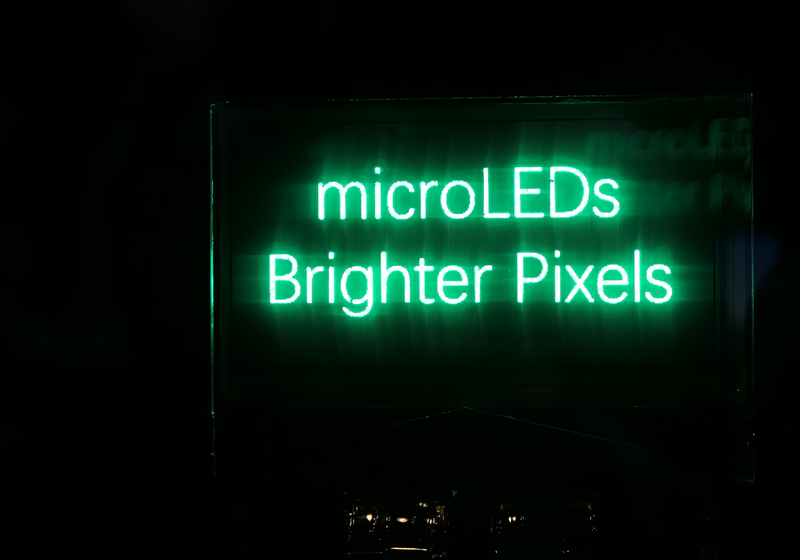For LED industry players in Taiwan who have been facing stiff competition from China’s supply chain and South Korea’s monopoly on OLED technologies, creating new business opportunities in Mini LED and Micro LED could be a solution. However, Chinese companies are also rushing into the Mini LED and Micro LED markets with recognition of the growth potential there. At the moment when Micro LED has yet to reach technological maturity, and Mini LED sets to enter a phase of explosive market growth. What are the roles of Chinese companies in the LED and other related industrial sectors?

(Image: Shutterstock)
Supply Chain Strengthening Capabilities with Chinese Players Increasing Investment in Mini LED and Micro LED Technology
The LED industry in Taiwan was lit by the innovative display technologies Micro LED and Mini LED. Related companies put hops on the existing advantage of having complete and mature supply chains for LED, display panel, and semiconductor. At the same time, the supply chains of Mini LED and Micro LED are being formed as the major brands in electronics and other leading-edge technologies pursue cross-industry collaborations. Besides the established LED manufacturers, Mini/Micro LED developers include mass transfer technology startups, semiconductor manufacturers, panel makers, and providers of process equipment and materials.
However, the development of Micro LED has many technical hurdles to clear. Manufacturing of Micro LED displays overturns some familiar elements in the production processes for electronics, especially with respect to the manufacturing of semiconductor components. There are bottlenecks in every part of the process flow, from the frontend portion comprising wafer epitaxy and chip (or die) fabrication to the backend portion comprising mass transfer, inspection, and repair. As Micro LED developers discreetly conduct their R&D, Mini LED has emerged to become the precursor technology.
Mass production could be more quickly achieved with Mini LED because the manufacturing process is mostly based on existing and mature technologies. Mini LED backlight displays have demonstrated performance that is not second to OLED displays. Apple is also reportedly planning to adopt Mini LED backlights for its next iPad Pro and MacBook Pro. Hence, Mini LED is expected to be an important technological innovation that the consumer electronics market will not ignore in the near future.
Taiwan’s leading LED chip manufacturer Epistar has initiated Mini/Micro LED technologies development for some time. The company actively courts allies across different sectors to accelerate R&D and shorten the commercialization schedule for its products. Yenrich Technology and Epsky, both of which are wholly owned subsidiaries of Epistar, set up a joint venture with China’s Leyard at the beginning of this year. The entity will establish a base for the R&D of Mini/Micro LED displays.
Later this June, Epistar also entered an alliance with Lextar to create a new holding company that will combine their resources and expertise for the development of Mini/Micro LED products. This move would allow Epistar and Lextar to benefit from each other’s strengths in the upstream, midstream, and downstream sections of the supply chain. Moreover, the partnership would expand sales channels through the vertical integration of resources and reduce costs associated with redundant investments. With the new holding company, the two major LED manufacturers in Taiwan will be able to speed up the commercialization schedules of their Mini/Micro LED technologies and launch products in the shortest time possible. Additionally, the alliance will for provide a chance for the two LED manufacturers to pull ahead of their competitors and improve their chance against OLED.

(Image: TechNews)
Taiwan-based display panel manufacturers are also shifting their focus to Mini/Micro LED because they want to circumvent the sole monopoly on OLED technologies held by South Korean panel manufacturers. For example, AUO and Innolux have already formulated application roadmaps for both technologies. As for panel manufacturers based in Mainland China, they have been supported by the government to invest heavily in the production of OLED panels in the recent years. However, the major Chinese panel manufacturers including BOE, TCL/CSOT, and Tianma Microelectronics are now stepping up their R&D of Mini/Micro LED products. They are well aware of the market potential of these next-generation display technologies and intend to break out from the competition through differentiation.
In addition to panel manufacturers, Chinese LED producers have practically made the commercialization of Micro LED and Mini LED their common goal. Currently, the LED supply chain in China is increasing spending to strengthen development for Mini/Micro LED technologies. LED chip producer Sanan Optoelectronics, HC Semitek, and Focus Lighting Tech, LED packagers NationStar, Refond, Jufei, Honglitronic, and MTC as well as LED display makers Leyard and the TCL Group, all began working on Micro LED and Mini LED technology.
The leading Chinese LED chip manufacturer San’an has made Mini/Micro LED a top priority in its development strategy and is now shipping Mini LED products to Samsung. San’an announced in 2019 that it will be investing RMB 1.2 billion to build a base for R&D and production in Gedian Economic and Technological Development Zone of Hubei Province. At this base, San’an will be initiating a special project to realize the industrial production of LED chips for Mini/Micro LED displays. San’an furthermore signed an MOU this year to establish a joint laboratory with TCL CSOT. The two parties plan to jointly invest around RMB 300 million into the R&D of Micro LED displays at this facility.
MTC has been working with its partners in Taiwan and South Korea to develop Mini LED backlights and LED displays. It also ramped up investments in both Mini LED and Micro LED. In 2019, the company began the first phase of its Mini/Micro LED project in Nanchang Hi-Tech Industry Development Zone of Jiangxi Province. Investments in the first phase totaled around RMB 1 billion (US$ 142.45 million) and were used to add new production lines and improve the company’s mass production capability for Mini/Micro LED products.
Meanwhile, NationStar is spending RMB 1 billion to expand its manufacturing capacity for LED packages used in Mini LED backlights and fine-pitch LED displays. Joint venture of Epistar and Leyard, on the other hand, is expected to enter operation in the second half of 2020. The two parties plan to jointly invest approximately RMB 1 billion over a five-year period to develop Mini/Micro LED technologies, hoping to accelerate commercialization process for solutions used in next-generation displays.
Inevitable Price War Pushing Differentiation in the Mini LED and Micro LED Markets
As the China government also offers large amount of subsidies for its domestic companies to encourage Mini LED and Micro LED development, a new round of competition to raise manufacturing capacity is on the horizon. Whether the increasing capacity will lead to oversupply and a new price war thus becomes a concern in the LED industry.
On this matter, Roger Chu, Vice Research President of TrendForce, shared his viewpoint, “Although the development of Micro LED still has many bottlenecks at the moment, Mini LED has emerged as a transitional technology that will contribute to the evolution of LED in display-related applications. There is now a clear path of development from backlights to self-emissive RGB pixels. As Apple’s strategy suggests, laying the groundwork for Micro LED will first involve addressing the challenge of Mini LED.”
Chu also believes that more competitors may not be a bad thing for the LED industry when it comes to advancing technologies. Commercialization and mass production of Mini/Micro LED products will likely arrive sooner if the number of market entrants continues to grow.
“One of the biggest fears in investing in a new technology is that no one else entering the same field,” noted Chu. The entry of Chinese suppliers into the Mini LED and Micro LED markets will eventually trigger a new round of fierce competition and talent raiding among LED manufacturers. Furthermore, these Chinese enterprises will likely be supported by subsidy policies from their home government as well as abundant funding from private and public sources. However, an increase in competitors will help expand the scale of the Mini LED and Micro LED markets. More market entrants will attract resources from the peripheries as well. This, in turn, will hasten technological breakthroughs and foster further innovations.
Besides resolving technological and technical issues, reducing costs is also a key factor in accelerating the commercialization and mass production of Mini/Micro LED products. Striking the right balance between price and specifications is crucial in order to meet the expectations of the market and ensure affordability for the majority of consumers. However, this also means that technology developers will implement an aggressive pricing strategy in order to stimulate and capture demand. Chu pointed out that a price war will be an inevitable part of the development process.
Since LED and panel manufacturers in Taiwan cannot stop their rivals with Chinese companies from pursuing the same next-generation display technologies, Chu suggests that they should focus on building up their advantages. Instead of worrying about the coming price war, Taiwan-based Mini/Micro LED developers ought to raise the technological barriers for market entry and differentiate themselves with unique solutions that meet the specific needs of prospective clients. These approaches will be vital to their success in the future.
(Author: Angela Young; TechNews)
2020 Micro LED Forum will go online and begin broadcasting on July 29 for sharing more Micro LED and Mini LED technology breakthroughs and commercialization progresses. Register now for early bird discount!















